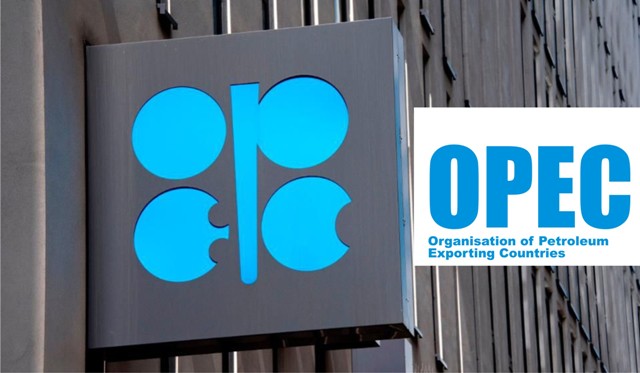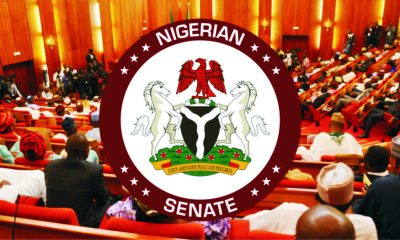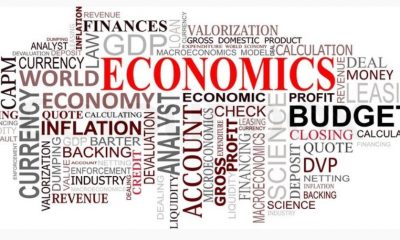Oil & Energy
‘OPEC’s Best Kept Secret Will Soon Be Revealed’

Russia’s invasion of Ukraine has sent oil prices soaring and could soon deprive oil markets of more than four million barrels of Russian oil.
For decades, OPEC has been looked upon in times of crisis to stabilise oil markets, and in the coming weeks, it is likely the cartel will be called upon again.
While it is widely believed that Saudi Arabia and the UAE have some spare capacity, OPEC’s real spare capacity has remained the cartel’s best-kept secret.
Russia’s invasion of Ukraine has upended global energy markets and, if stability doesn’t return soon, that could have serious geopolitical consequences for OPEC members. The pre-invasion hydrocarbon markets were almost in equilibrium, as stable global economic growth combined with rational management strategies from the OPEC+ alliance to balance markets.
Despite a global pandemic that disrupted the global economy for two years, energy markets had managed to return to a level of relative stability. Some were even predicting a post-Covid order in which OPEC+ would experience an era of strong influence and power.
Today, the OPEC+ alliance appears to be hanging by a thread as Russia faces an economic crisis on the back of sanctions imposed in response to its invasion. The ongoing shift inside OECD countries, especially the EU, the UK, and the U.S., to wean themselves off Russian energy supplies, is dramatic and could prove to be influential in isolating Russia from the wider energy market.
At a time when global oil and gas markets were already facing some supply issues, Russia’s invasion of Ukraine really threw fuel on the fire. Western energy-dependent countries are now calling on others to increase oil and gas production and exports not only to quell the global thirst for energy but also to counter the rapid rise in prices.
All eyes are on OPEC, as the oil exporters group, some call it an oil cartel, is considered the only viable option in the short term to supply more. Until now, all calls from Washington, London, and Brussels appear to have fallen on deaf ears.
In a seemingly desperate move to influence OPEC’s leaders, British PM Boris Johnson flew to Saudi Arabia, officially to discuss possible investment agreements, but mainly to push for additional oil volumes from the Kingdom.
During meetings with Saudi Crown Prince, Mohammed bin Salman, the defacto ruler of the Kingdom, and his counterpart, Abu Dhabi Crown Prince, Sheikh Mohammed bin Zayed, Johnson pushed for additional oil supplies, while also discussing Western sanctions on Russia. The Prime Ministers’ efforts, however, have been met with silence, no new energy promises have been made by either party.
According to Johnson, when asked about a potential change in OPEC’s production strategies, MBS and MBZ both made it clear that they understand the need for stability in the global oil and gas markets.
The real answer from both OPEC leaders was very clear indeed, at this moment they will not change their production and export strategies and they will not endanger their strong relationships with Russia’s leader Putin. These responses were not particularly surprising for analysts.
OPEC has always prided itself on maintaining a healthy spare production capacity in order to influence oil markets. For decades, OPEC producers have been the center of attention for traders, importers, and financial analysts, and have always been considered the ultimate resource for energy in case of a global crisis. Saudi Arabia, and lately also Abu Dhabi, have been seen as the ultimate swing-producers that clients could rely on if a sudden geopolitical or technical issue were to occur blocking potential suppliers.
The Kingdom is still seen as the ultimate swing-producer, holding a spare capacity of between 1.2-2.1 million bpd. In the last couple of years, Abu Dhabi’s upstream expansion has pushed it into a position of being a swing producer, with 0.6-1.2 million bpd.
Riyadh’s geopolitical power position is directly related to this theoretical production capacity, as it mitigates the removal of Iran or Venezuela from oil markets. Abu Dhabi’s extra volumes are becoming increasingly important in such a tight oil market. Before the pandemic, US shale companies were also seen as swing producers, even if their long-term production capacity differed.
Since the end of the pandemic (which was the first time that global analysts seemed to understand that the market was heading towards a supply crisis), the market has had to reassess this narrative of spare capacity.
The lack of new oil and gas investment and discoveries in recent decades has left oil markets drastically unprepared for such a shortage. Some have warned that part of the current OPEC+ export strategy is based on internal capacity constraints.
In a market that was slowly recovering from major demand destruction, OPEC members could hide their domestic production constraints behind the facade of a conservative production policy.
Now, with Russia in crisis and an oil shortage looming, Saudi Arabia, the UAE, and other members will need to put their money were their mouth is. If they fail to act now, rumors about a lack of spare production capacity will become increasingly believable.
Current analysis already indicates that most OPEC producers are incapable of increasing production. Saudi Arabia and the UAE are believed to have higher capacity, but the current silence from both players is not going to instill confidence in observers.
A possible reality is hovering on the horizon in which 4+ million Russian oil barrels are stuck on Russian soil and the market is unable to find a substitute for them. If Saudi Arabia and the UAE are not able to supply that much-needed 2-3 million bpd to Western markets, oil prices will soar to unseen heights.
A potential failure to find a swing-producer would not only lead to a real energy price crisis but would also undermine the current strategic power OPEC holds. Geopolitically, OPEC producers’ attractiveness to others (financial markets, manufacturers, and investors, but also defense/security) is linked to their oil and gas supply capabilities. Without this, the entire geopolitical equation will change.
OPEC Production Capacity
Saudi Arabia, Iraq, the UAE, and Kuwait have four million bpd of spare capacity – in 3-6 months
By: Cyril Widdershoven
Widershoven reports for Oilprice.com
Oil & Energy
FG Woos IOCs On Energy Growth
The Federal Government has expressed optimism in attracting more investments by International Oil Companies (IOCs) into Nigeria to foster growth and sustainability in the energy sector.
This is as some IOCs, particularly Shell and TotalEnergies, had announced plans to divest some of their assets from the country.
Recall that Shell in January, 2024 had said it would sell the Shell Petroleum Development Company of Nigeria Limited (SPDC) to Renaissance.
According to the Minister of State for Petroleum Resources (Oil), Heineken Lokpobiri, increasing investments by IOCs as well as boosting crude production to enhancing Nigeria’s position as a leading player in the global energy market, are the key objectives of the Government.
Lokpobiri emphasized the Ministry’s willingness to collaborate with State Governments, particularly Bayelsa State, in advancing energy sector transformation efforts.
The Minister, who stressed the importance of cooperation in achieving shared goals said, “we are open to partnerships with Bayelsa State Government for mutual progress”.
In response to Governor Douye Diri’s appeal for Ministry intervention in restoring the Atala Oil Field belonging to Bayelsa State, the Minister assured prompt attention to the matter.
He said, “We will look into the issue promptly and ensure fairness and equity in addressing state concerns”.
Lokpobiri explained that the Bayelsa State Governor, Douyi Diri’s visit reaffirmed the commitment of both the Federal and State Government’s readiness to work together towards a sustainable, inclusive, and prosperous energy future for Nigeria.
While speaking, Governor Diri commended the Minister for his remarkable performance in revitalisng the nation’s energy sector.
Oil & Energy
Your Investment Is Safe, FG Tells Investors In Gas
The Federal Government has assured investors in the nation’s gas sector of the security and safety of their investments.
Minister of State for Petroleum Resources (Gas), Ekperikpe Ekpo, gave the assurance while hosting top officials of Shanghai Huayi Energy Chemical Company Group of China (HUAYI) and China Road and Bridge Corporation, who are strategic investors in Brass Methanol and Gas Hub Project in Bayelsa State.
The Minister in a statement stressed that Nigeria was open for investments and investors, insisting that present and prospective foreign investors have no need to entertain fear on the safety of their investment.
Describing the Brass project as one critical project of the President Bola Tinubu-led administration, Ekpo said.
“The Federal Government is committed to developing Nigeria’s gas reserves through projects such as the Brass Methanol project, which presents an opportunity for the diversification of Nigeria’s economy.
“It is for this and other reasons that the project has been accorded the significant concessions (or support) that it enjoys from the government.
“Let me, therefore, assure you of the strong commitment of our government to the security and safety of yours and other investments as we have continually done for similar Chinese investments in Nigeria through the years”, he added.
Ekpo further tasked investors and contractors working on the project to double their efforts, saying, “I want to see this project running for the good of Nigeria and its investors”.
Earlier in his speech, Leader of the Chinese delegation, Mr Zheng Bi Jun, said the visit to the country was to carry out feasibility studies for investments in methanol projects.
On his part, the Managing Director of Brass Fertiliser and Petrochemical Ltd, Mr Ben Okoye, expressed optimism in partnering with genuine investors on the project.
Oil & Energy
Oil Prices Record Second Monthly Gain
Crude oil prices recently logged their second monthly gain in a row as OPEC+ extended their supply curb deal until the end of Q2 2024.
The gains have been considerable, with WTI adding about $7 per barrel over the month of February.
Yet a lot of analysts remain bearish about the commodity’s prospects. In fact, they believe that there is enough oil supply globally to keep Brent around $81 this year and WTI at some $76.50, according to a Reuters poll.
Yet, like last year in U.S. shale showed, there is always the possibility of a major surprise.
According to the respondents in that poll, what’s keeping prices tame is, first, the fact that the Red Sea crisis has not yet affected oil shipments in the region, thanks to alternative routes.
The second reason cited by the analysts is OPEC+ spare capacity, which has increased, thanks to the cuts.
“Spare capacity has reached a multi-year high, which will keep overall market sentiment under pressure over the coming months”, senior analyst, Florian Grunberger, told Reuters.
The perception of ample spare capacity is definitely one factor keeping traders and analysts bearish as they assume this capacity would be put into operation as soon as the market needs it. This may well be an incorrect assumption.
Saudi Arabia and OPEC have given multiple signs that they would only release more production if prices are to their liking, and if cuts are getting extended, then current prices are not to OPEC’s liking yet.
There is more, too. The Saudis, which are cutting the most and have the greatest spare capacity at around 3 million barrels daily right now, are acutely aware that the moment they release additional supply, prices will plunge.
Therefore, the chance of Saudi cuts being reversed anytime soon is pretty slim.
Then there is the U.S. oil production factor. Last year, analysts expected modest output additions from the shale patch because the rig count remained consistently lower than what it was during the strongest shale boom years.
That assumption proved wrong as drillers made substantial gains in well productivity that pushed total production to yet another record.
Perhaps a bit oddly, analysts are once again making a bold assumption for this year: that the productivity gains will continue at the same rate this year as well.
The Energy Information Administration disagrees. In its latest Short-Term Energy Outlook, the authority estimated that U.S. oil output had reached a record high of 13.3 million barrels daily that in January fell to 12.6 million bpd due to harsh winter weather.
For the rest of the year, however, the EIA has forecast a production level remaining around the December record, which will only be broken in February 2025.
Oil demand, meanwhile, will be growing. Wood Mackenzie recently predicted 2024 demand growth at 1.9 million barrels daily.
OPEC sees this year’s demand growth at 2.25 million barrels daily. The IEA is, as usual, the most modest in its expectations, seeing 2024 demand for oil grow by 1.2 million bpd.
With OPEC+ keeping a lid on production and U.S. production remaining largely flat on 2023, if the EIA is correct, a tightening of the supply situation is only a matter of time. Indeed, some are predicting that already.
Natural resource-focused investors Goehring and Rozencwajg recently released their latest market outlook, in which they warned that the oil market may already be in a structural deficit, to manifest later this year.
They also noted a change in the methodology that the EIA uses to estimate oil production, which may well have led to a serious overestimation of production growth.
The discrepancy between actual and reported production, Goehring and Rozencwajg said, could be so significant that the EIA may be estimating growth where there’s a production decline.
So, on the one hand, some pretty important assumptions are being made about demand, namely, that it will grow more slowly this year than it did last year.
This assumption is based on another one, by the way, and this is the assumption that EV sales will rise as strongly as they did last year, when they failed to make a dent in oil demand growth, and kill some oil demand.
On the other hand, there is the assumption that U.S. drillers will keep drilling like they did last year. What would motivate such a development is unclear, besides the expectation that Europe will take in even more U.S. crude this year than it already is.
This is a much safer assumption than the one about demand, by the way. And yet, there are indications from the U.S. oil industry that there will be no pumping at will this year. There will be more production discipline.
Predicting oil prices accurately, even over the shortest of periods, is as safe as flipping a coin. With the number of variables at play at any moment, accurate predictions are usually little more than a fluke, especially when perceptions play such an outsized role in price movements.
One thing is for sure, though. There may be surprises this year in oil.
lrina Slav
Slav writes for Oilprice.com.
-
Business6 hours ago
Oil Production Resumption: Ogoni Youths Seek Inclusion In FG’s Plans
-

 News8 hours ago
News8 hours agoSenate Reshuffles Committees, Appoints New Chairmen For Dev Commissions
-

 Nation6 hours ago
Nation6 hours agoBizman Alleges Threat To Life …Seeks Police , Govt’s Intervention
-
Rivers6 hours ago
NOSDRA D-G Disburses N150m To 300 Farmers In Rivers
-

 Niger Delta5 hours ago
Niger Delta5 hours agoOgoni Postgraduate Forum Tasks HYPREP On Scholarship Scheme
-
Business6 hours ago
NCDMB Assures Greater Local Industry Participation In Oil, Gas Projects
-

 News8 hours ago
News8 hours agoNigeria Strengthens Economic Ties With Germany To Boost Investment, Jobs
-

 Featured5 hours ago
Featured5 hours agoFubara Flags Off Upgrading Of 135 Primary Healthcare Facilities In Rivers

